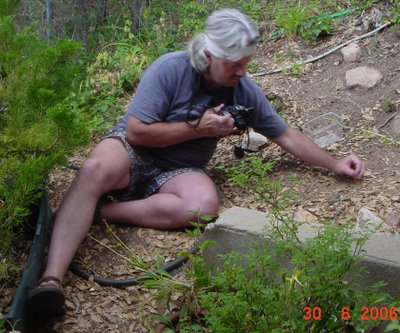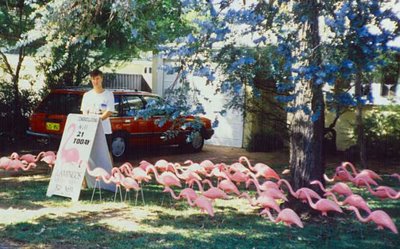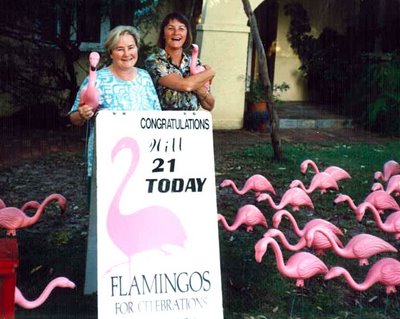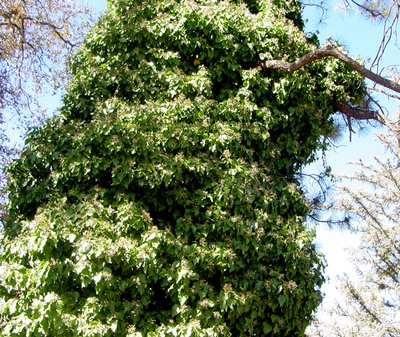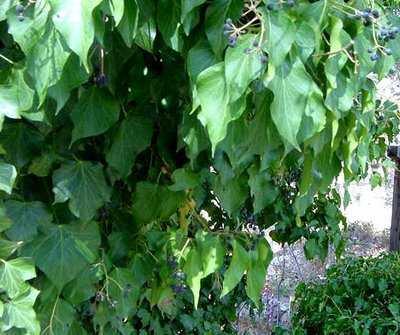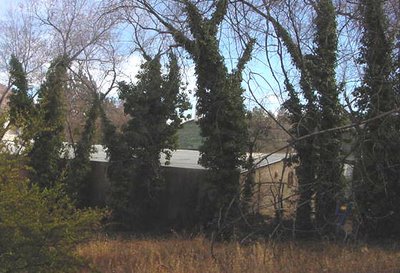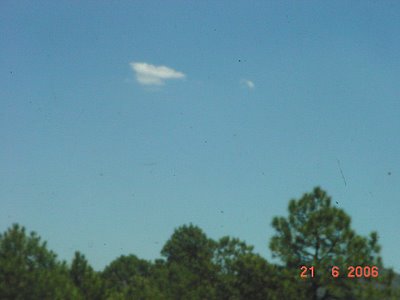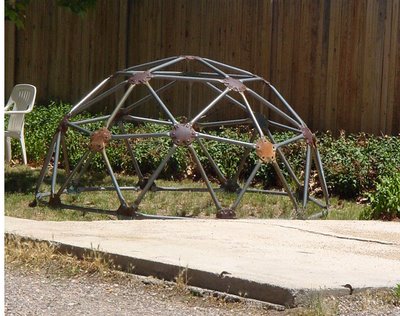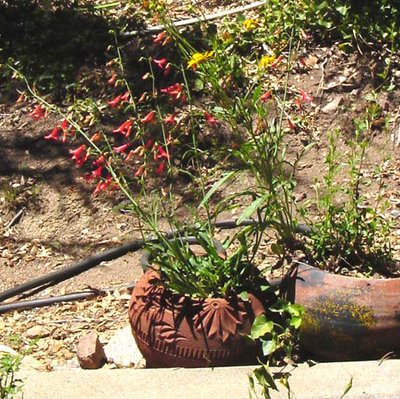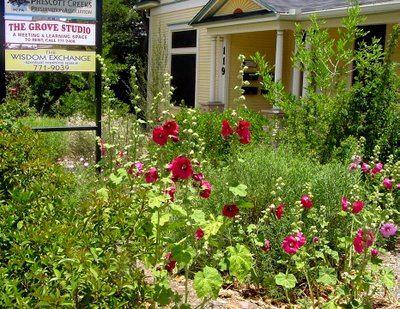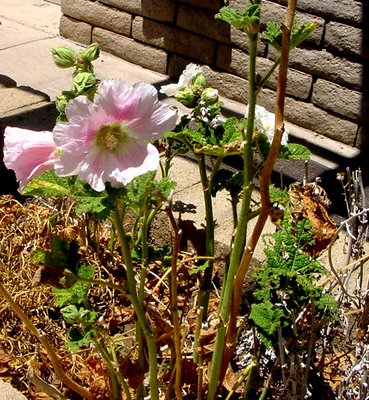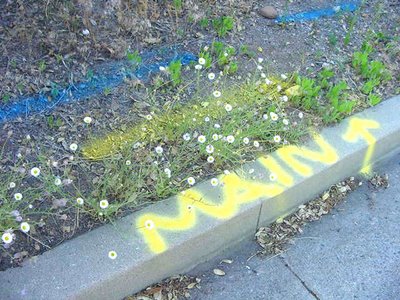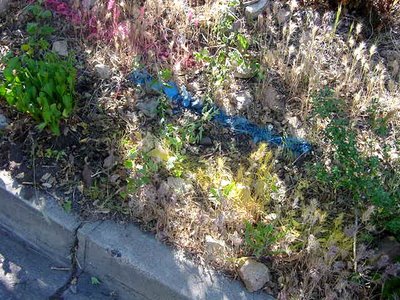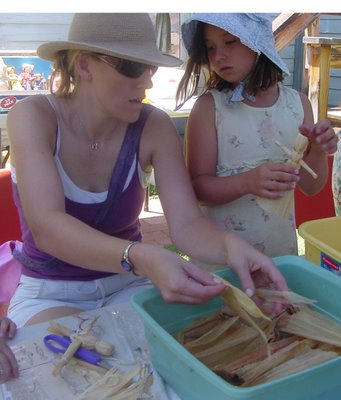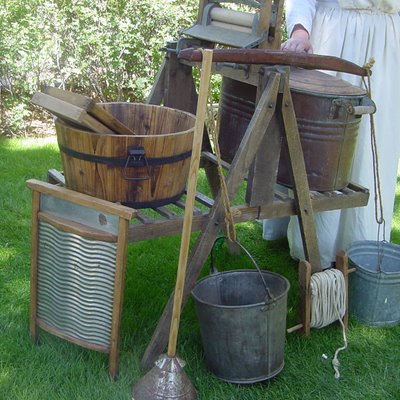Well, I have news for those smart-ass back-east slickers. I've lived in the big city where it rains every other day and I've lived where Spanish moss drips off of the live oaks. But once I returned to Arizona, my water tropism kicked in. These days, there's nothing more wonderful than to go down to the river or the creek or the wash and watch the water run!
That's why I am conducting a one-woman campaign against those absolutely awful cast concrete barriers that line the edges of modern bridges. You can't see a dang thing when you cross the Verde on I-17 Northbound or Kirkland Creek heading to Bagdad or on any modern highway crossing a watercourse.
Look at those cement monstrosities below. They're on the new super duper Willow Creek crossing on Williamson Valley Road. Whether the creek's dry -- or whether it's in flood stage -- you wouldn't find out by glancing out the window. Talk about being disconnected from your environment!

At one time, bridge designers took care to allow passers-by to see that which was being bridged. Take a look at the Verde crossing on I-17 going South as a reminder of a more bountiful day. You can actually see the river on its way to fill the faucets of greater Phoenix.
Even better, consider this bridge over the Verde at Perkinsville. A wonderful old structure that lets the driver know he's up in the air over a Real River. There was a similar bridge over pretty little Kirkland Creek at Yava until a few years ago, when the highway improvers installed the typical concrete barriers that now obscure the creek.
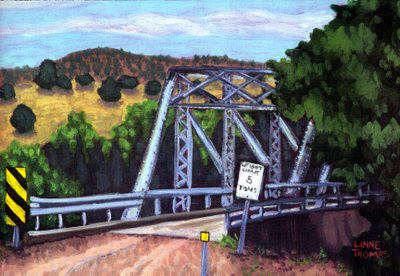
I thank artist Linne Thomas for making a living record of the Perkinsville bridge -- and for letting me use the painting here to illustrate my point. Linne has captured many pieces of the Arizona that is disappearing as the land is subdivided and structures from earlier days are either prettified or bulldozed. You can see more of her work here or in the Arts Prescott co-op gallery on Whiskey Row.

